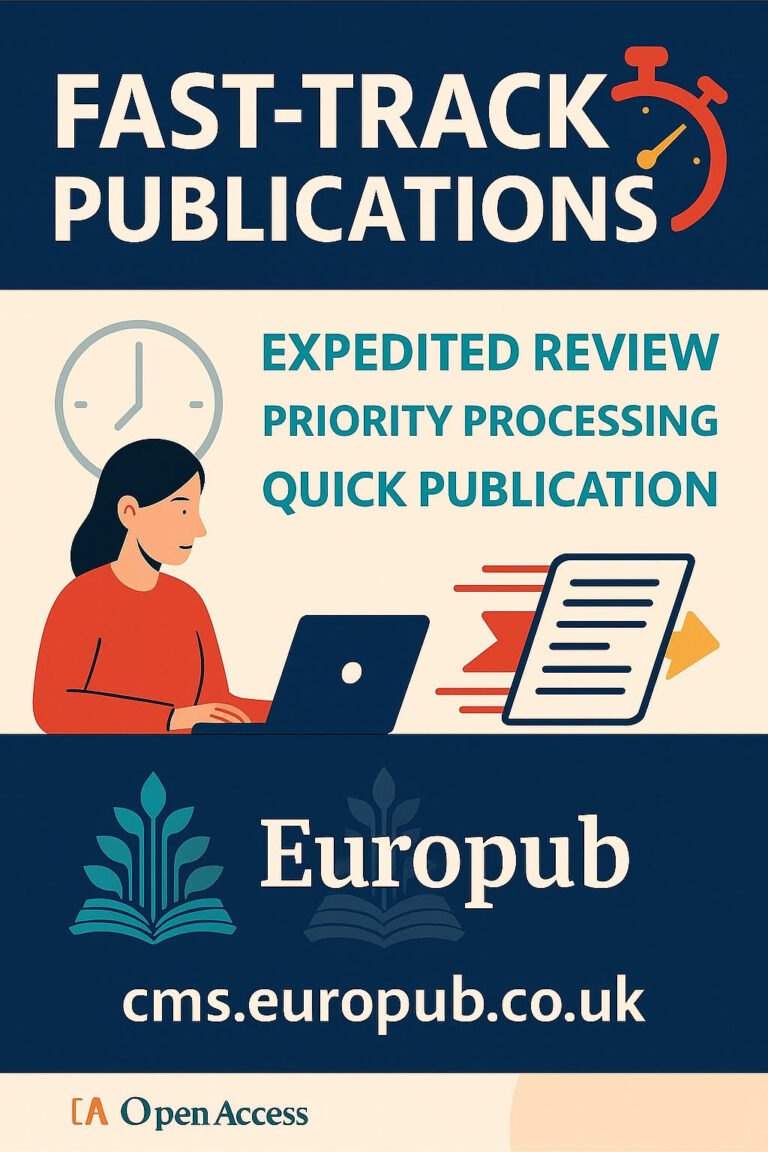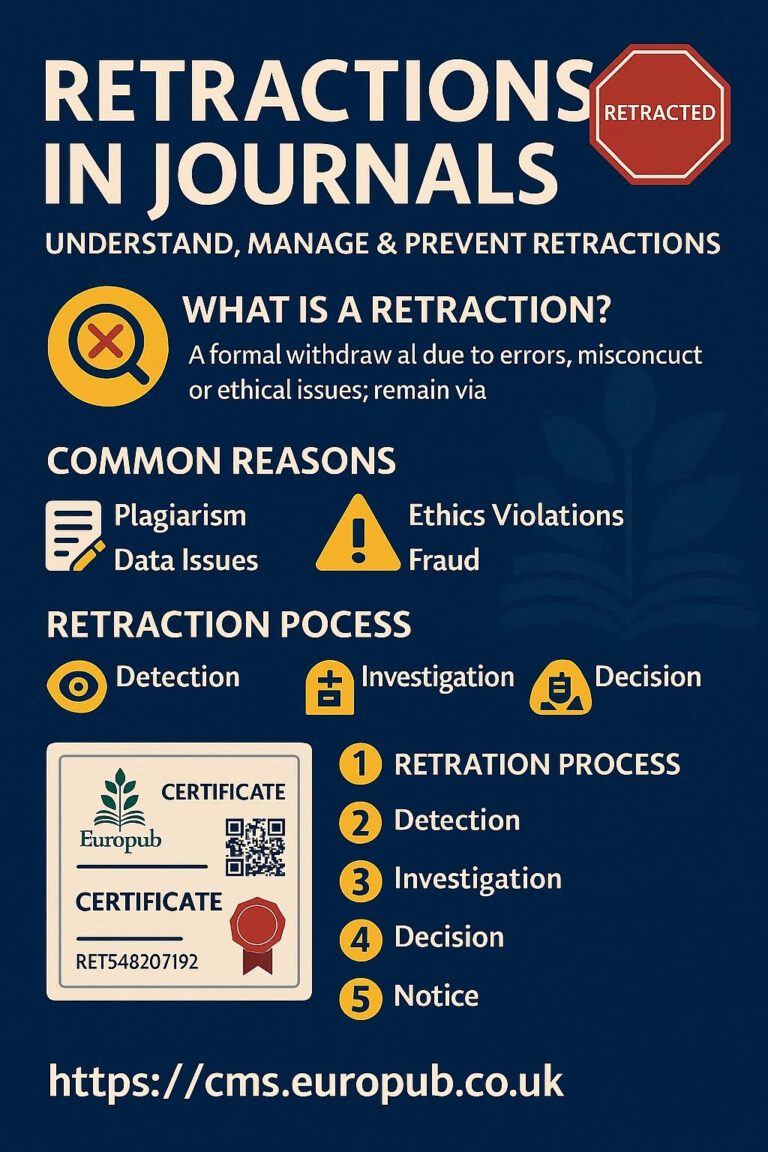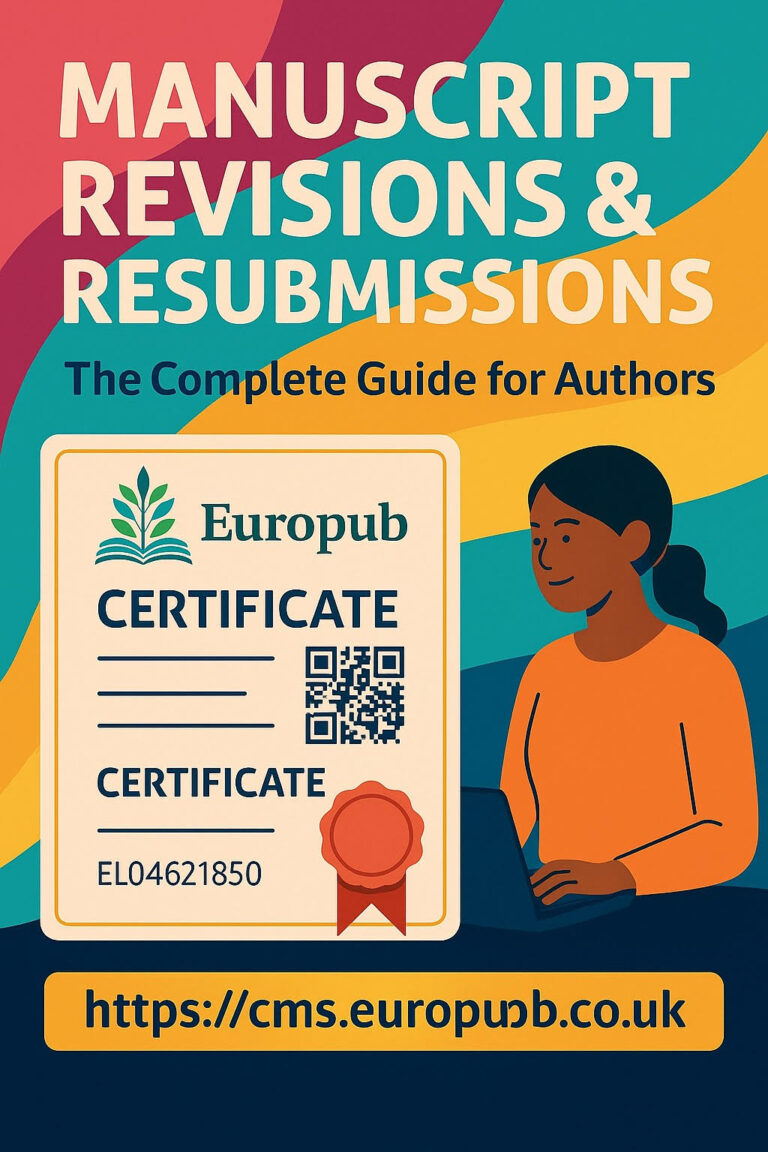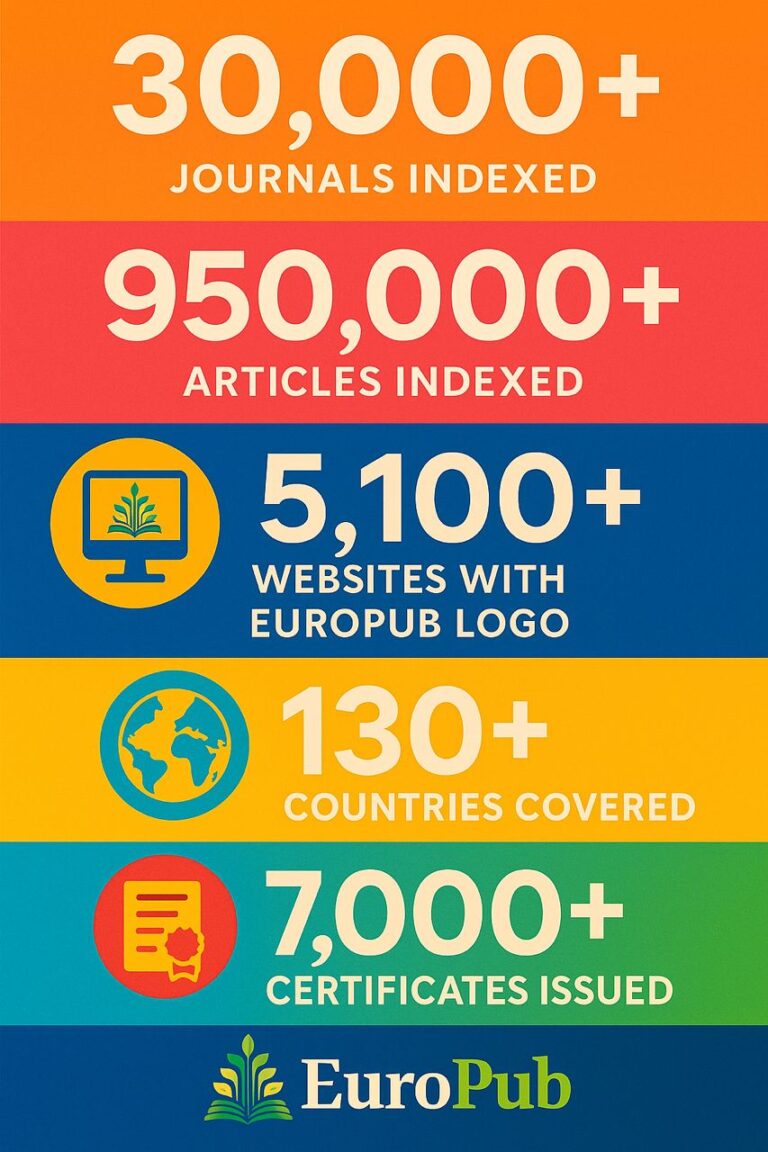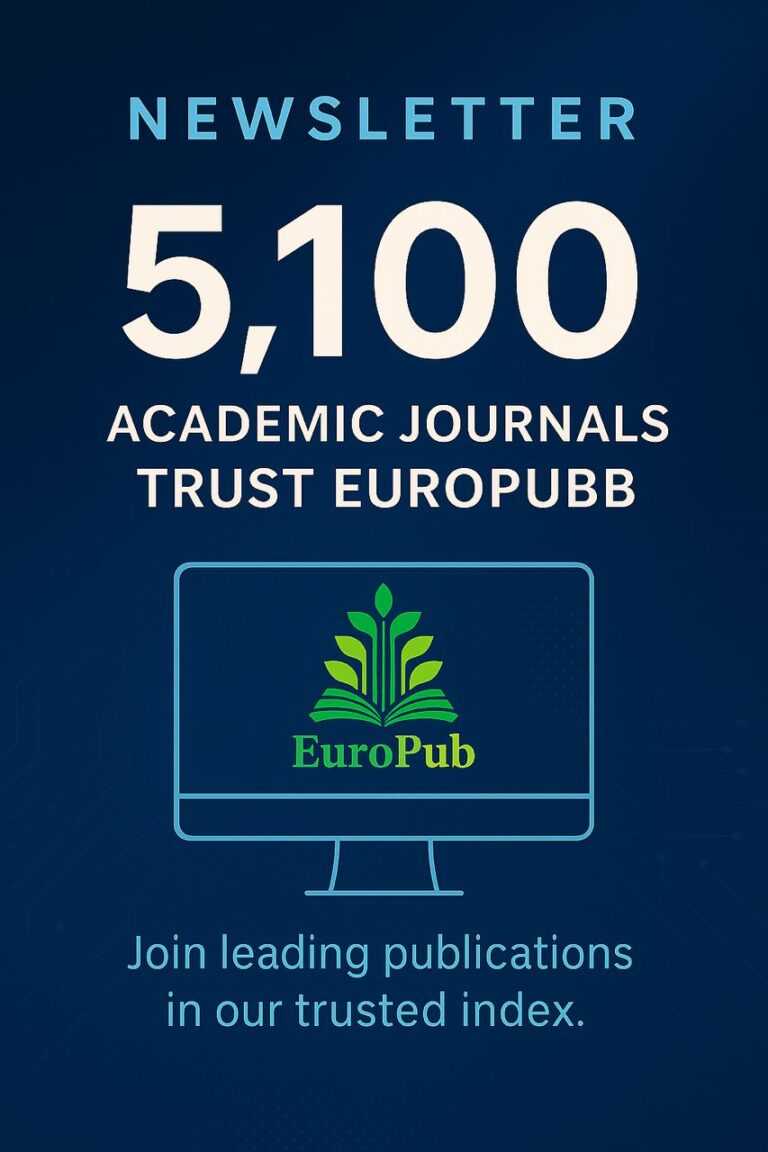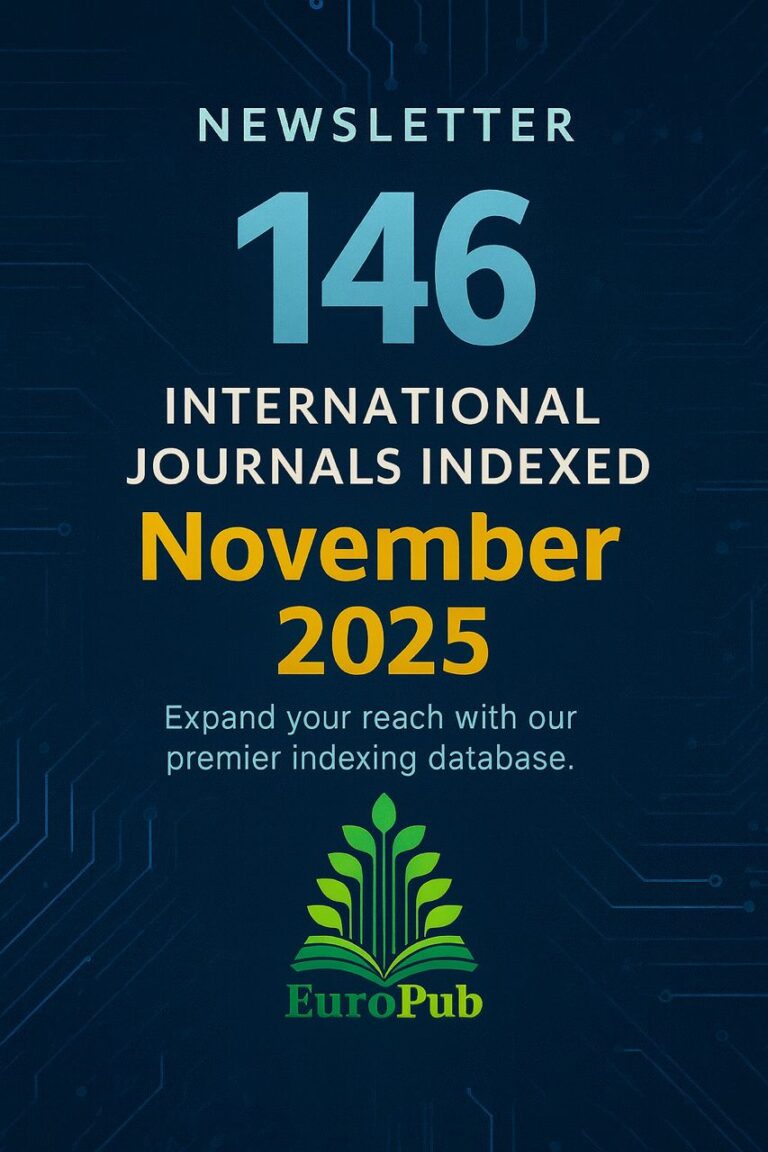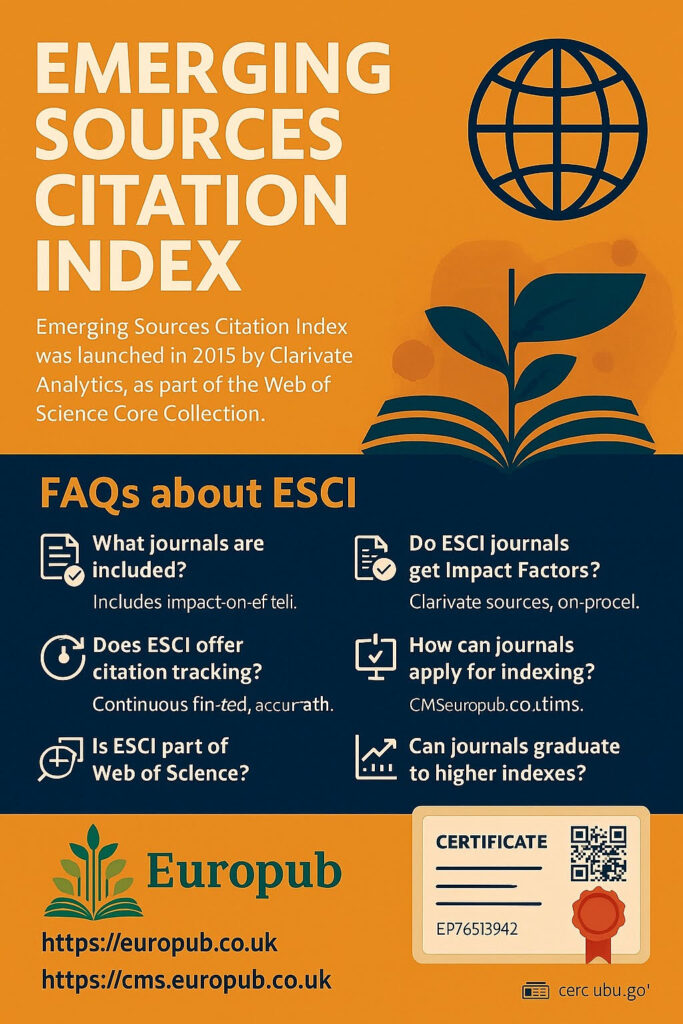
What is ESCI?
The Emerging Sources Citation Index (ESCI) was launched in 2015 by Clarivate Analytics as part of the Web of Science Core Collection. Its aim is to include high-quality, peer-reviewed journals that are important regionally or are publishing in new and developing academic fields.
While ESCI journals do not receive an Impact Factor, they gain visibility, citations are tracked, and they are considered for potential inclusion in SCIE (Science Citation Index Expanded), SSCI (Social Sciences Citation Index), or AHCI (Arts & Humanities Citation Index).
 Key Features of ESCI
Key Features of ESCI
 Multidisciplinary coverage: science, medicine, technology, social sciences, arts, humanities.
Multidisciplinary coverage: science, medicine, technology, social sciences, arts, humanities. Focus on emerging research areas and regional importance.
Focus on emerging research areas and regional importance. Must pass editorial and ethical standards (COPE, peer review, transparency).
Must pass editorial and ethical standards (COPE, peer review, transparency). Provides citation tracking in Web of Science.
Provides citation tracking in Web of Science. Serves as a gateway for journals to move toward prestigious indexes.
Serves as a gateway for journals to move toward prestigious indexes. No Impact Factor yet, but offers greater visibility.
No Impact Factor yet, but offers greater visibility.
 Benefits of ESCI Inclusion
Benefits of ESCI Inclusion
- Increased Discoverability – Journals appear in Web of Science searches globally.
- Academic Recognition – ESCI indexing adds credibility to authors, editors, and reviewers.
- Citation Tracking – Helps monitor journal influence and citation performance.
- Promotion & Evaluation – Many universities and funding bodies accept ESCI journals.
- Gateway to Impact Factor – ESCI journals can be evaluated later for SCIE/SSCI/AHCI.
- Editorial Development – Journals improve quality standards to move higher.
- Regional Journals – Supports visibility of regional and local journals.
- Collaboration Opportunities – Journals gain international attention.
 FAQs about ESCI (with Answers)
FAQs about ESCI (with Answers)
General Information
Q1: What does ESCI stand for?
A1: Emerging Sources Citation Index.
Q2: Who manages ESCI?
A2: Clarivate Analytics, within the Web of Science Core Collection.
Q3: When was ESCI launched?
A3: In 2015, to expand journal coverage.
Q4: What is the purpose of ESCI?
A4: To provide visibility to emerging or regional journals before they qualify for major indexes.
Q5: How many journals are included in ESCI?
A5: Over 7,000 journals worldwide (and growing).
Eligibility & Requirements
Q6: What criteria must journals meet?
A6: Peer review, ethical standards, editorial quality, publishing regularity, and transparency.
Q7: Do ESCI journals require peer review?
A7: Yes, rigorous peer review is mandatory.
Q8: Is open access mandatory?
A8: No, both open-access and subscription journals are eligible.
Q9: What about language requirements?
A9: Journals must provide English metadata (titles, abstracts, keywords) even if full text is in another language.
Q10: Do ESCI journals need an international editorial board?
A10: Not mandatory, but strongly recommended for global visibility.
Q11: Are ethical policies required?
A11: Yes, journals must comply with COPE guidelines and have clear policies on plagiarism, conflict of interest, etc.
Q12: How is publishing frequency checked?
A12: Journals must maintain consistent publication schedules (quarterly, biannual, etc.).
Q13: Do ESCI journals need DOI assignment?
A13: Yes, providing DOIs is strongly encouraged.
Q14: What about archiving policies?
A14: Journals must ensure long-term access (via services like LOCKSS, Portico, or institutional repositories).
Impact & Visibility
Q15: Do ESCI journals have an Impact Factor?
A15: No, but their citations are counted in Web of Science.
Q16: Why is ESCI important without an Impact Factor?
A16: It provides visibility, credibility, and recognition for journals aiming to grow.
Q17: Do universities recognize ESCI journals?
A17: Many universities accept ESCI publications for promotion and evaluation.
Q18: Do funding agencies recognize ESCI publications?
A18: It depends on the agency, but ESCI is often considered a reputable database.
Q19: How are ESCI journals cited?
A19: They are indexed in Web of Science, so citations are fully trackable.
Q20: Do ESCI journals appear in Google Scholar or Scopus?
A20: Yes, many ESCI journals are also covered by Google Scholar, Scopus, and DOAJ.
Progression to Higher Indexes
Q21: Is ESCI a stepping stone to SCIE/SSCI/AHCI?
A21: Yes, ESCI is the first stage before being considered for major indexes.
Q22: What are the criteria to move from ESCI to SCIE/SSCI?
A22: Increased citation impact, editorial consistency, publishing regularity, and scientific influence.
Q23: How long does it take to progress?
A23: Usually 2–5 years, depending on performance.
Q24: Does ESCI guarantee promotion to SCIE/SSCI/AHCI?
A24: No, but inclusion improves the chances.
Q25: Can a journal be removed from ESCI?
A25: Yes, if it fails to maintain required standards.
For Authors & Editors
Q26: Should authors publish in ESCI journals?
A26: Yes, because ESCI journals provide recognition, visibility, and trackable citations.
Q27: Do ESCI publications count for PhD evaluations and promotions?
A27: In many universities, yes.
Q28: Do ESCI journals help in academic networking?
A28: Yes, inclusion increases global reach.
Q29: Do ESCI journals provide certificates for editors and reviewers?
A29: Not directly, but platforms like CMS Europub issue official certificates.
Q30: What challenges do authors face?
A30: Lower prestige compared to SCIE/SSCI, but still valuable for career growth.
Technical & Editorial Standards
Q31: Are plagiarism detection tools required?
A31: Yes, journals must check manuscripts using tools like iThenticate.
Q32: Do ESCI journals need ORCID integration?
A32: Strongly recommended for both authors and editors.
Q33: Is long-term archiving mandatory?
A33: Yes, to ensure accessibility.
Q34: Do ESCI journals need transparent peer-review policies?
A34: Yes, journals must clearly outline their review process.
Q35: Are multilingual journals accepted?
A35: Yes, as long as English abstracts and metadata are provided.
Q36: Do ESCI journals require APC (Article Processing Charges)?
A36: Not required; policies vary by journal.
 Useful Links for Guidance
Useful Links for Guidance
 Europub Main Website
Europub Main Website Europub News & Scientific Guides
Europub News & Scientific Guides Certificate Management System – Apply Here
Certificate Management System – Apply Here Clarivate ESCI Info Page
Clarivate ESCI Info Page COPE Guidelines on Publishing Ethics
COPE Guidelines on Publishing Ethics ORCID Registration
ORCID Registration
 Certification & Support (Promotional Text)
Certification & Support (Promotional Text)
 “Europub provides official certificates for journals, editors, reviewers, and conferences. All certificates include EuroCode + QR code for authenticity. You can also request certification for your ESCI-indexed journal via CMS Europub. Our team is ready to guide you at every stage.”
“Europub provides official certificates for journals, editors, reviewers, and conferences. All certificates include EuroCode + QR code for authenticity. You can also request certification for your ESCI-indexed journal via CMS Europub. Our team is ready to guide you at every stage.”
